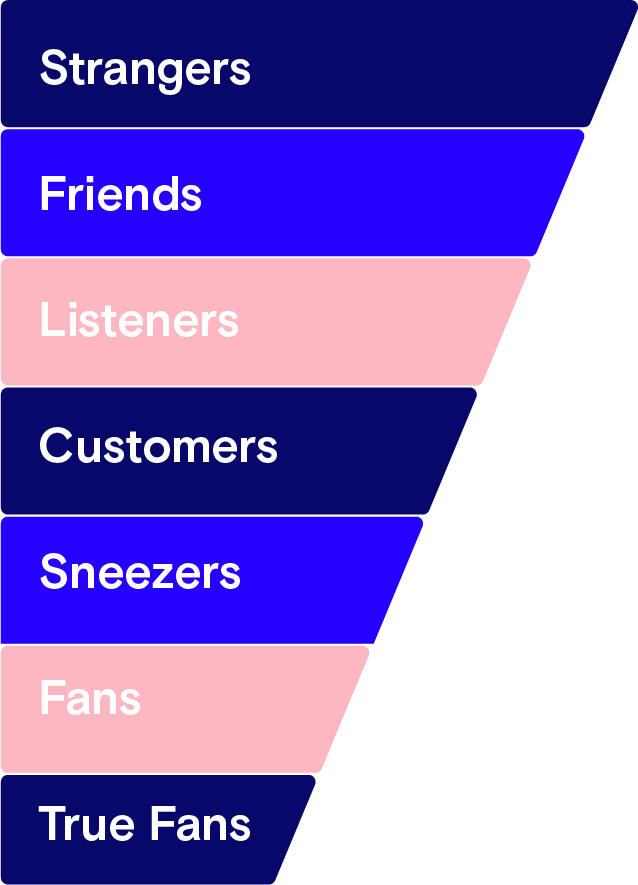You've built a fine SaaS product, that solves a prominent pain-point. You've discovered a large addressable market, that
fits your product like a glove. It's taken a few months of toil, but you've definitely hit Product-Market Fit.
Your product is DIY. You've figured the formula to simplify your
customers' workflows
without having to entirely depend on the sales team. Your prospects sign up, check your product out, and whip out their
credit cards without a human having to force it out of them. Life is simple. Fulfilling even. Yet your Spidey-senses are
tingling.
You see, as your business grows, your product will too. You know it, your competitor knows it. Neither of you will ever
truly leave the drawing board. You will launch new products to upsell/cross-sell to, attempt pricing experiments to stay
relevant in an always-changing market, and even voyage into new geographies with distinct customer behaviors.
Suddenly, the simple ‘checkout → payment gateway → recurring billing’ equation isn’t as effective anymore. New gaps
appear. And with them, new point solutions get added to your tech stack. Till you have, well … a real spaghetti of
compliance, software, data, and revenue leakage issues.
Plus, with rising competition, businesses are continuously doing more to acquire the same volume of customers. Customer
acquisition costs (CAC) are growing. Sales cycles are only getting longer. And SaaS buying is transforming from a
vendor-led to a customer-led model. If profitability is your end-game, your sales and marketing (S&M) expenses just cannot
keep scaling with your business.
Wait, was the Panic Button ever THIS big before?
This brings us to the Ultimate Question: how do you scale your revenue consistently, without having things fall apart, or
having to constantly pump money into acquisition?
Rather, how do you automate your path to sustainable and efficient hockey-stick revenue growth?
This means not only converting, but holding on to your paying customers long enough to recover your CAC. Identifying
and moving the right levers at every stage of the customer's journey to fuel revenue. But, most importantly, doing all
this through nothing else, but your product.
Many will tell you that the magic pill to this problem is to build a
self-serve SaaS. That, it will
help you scale without adding overheads.
But, what does it really take?
The next few pages will arm you with questions, ideas, and best practices to help steer your revenue growth at every stage
of your business and help you build a self-service workflow. Each section also includes stories from successful SaaS
businesses across Acquisition, Activation, Retention, Monetization, Metrics, and Measurement.
Whether this is the first reading in your quest to unlock scale or the hundredth piece you're reading on this subject, we
hope to leave you with at least a few immediate takeaways and wisdom as you engineer revenue growth and build a SaaS
business that isn’t just self-serve but is also sticky and resilient.
But First, Why Self-service Saas Is AWESOME
A wide top-of-funnel: By having a free trial/freemium, you are opening your funnel up to people
out there who want to kick the tires and try your product, without having to get into a long-term negotiation with
a salesperson.
Fast sales cycles: With a free trial/freemium plan, a great onboarding flow, and a highly sticky
product, customers can experience immediate value and upgrade in no time.
Non-linear scale: Unlike its sales-driven counterpart, self-service growth does not have a linear
curve. It challenges the very assumption that sales productivity is the key to growth. In fact, the added cost of
earning every additional dollar is close to zero.
High revenue per employee (RPE): SaaS was always built to scale well, but with a self-service
approach, you're able to do more with far fewer people on your team. Fewer support requests, less hand-holding,
and automatic upgrades mean higher profit margins per customer.
Everyone is responsible for growth: At a self-service driven company, everyone is responsible for
revenue. While product managers, engineers, and founders have a direct influence on the product, oftentimes sales
(eg: increasing PQL conversions) or even marketing (for eg: tackling virality or pricing experiments) plays a
pivotal role in shaping it.
| Old Way | Self-service as the New Way |
| Spend heavily on traditional marketing activities and sales activities. | Trials and real product experiences drive a majority of your pipeline. |
| The Sales team explains how the product could serve as a solution. | User experiences the product to see immediate value. |
| Follow-up through each stage of the sales cycle. | Engineer Aha moments through your users' journey in your product. |
| Sales converts the user into paying customers. | User convert automatically with a much faster sales cycle. |
Self-service SaaS Revenue Growth Framework
Almost all product-led SaaS businesses follow a self-serve revenue growth framework. But the self-service SaaS
model doesn't stop at just being product-led. A truly delightful customer experience, limitless customer
acquisition possibilities, failproof churn management — all focus on streamlining and strengthening the entire
self-service channel for revenue growth.
The self-service revenue growth framework cuts across these 5 essential stages:




























-no-of-cus-2.png)


